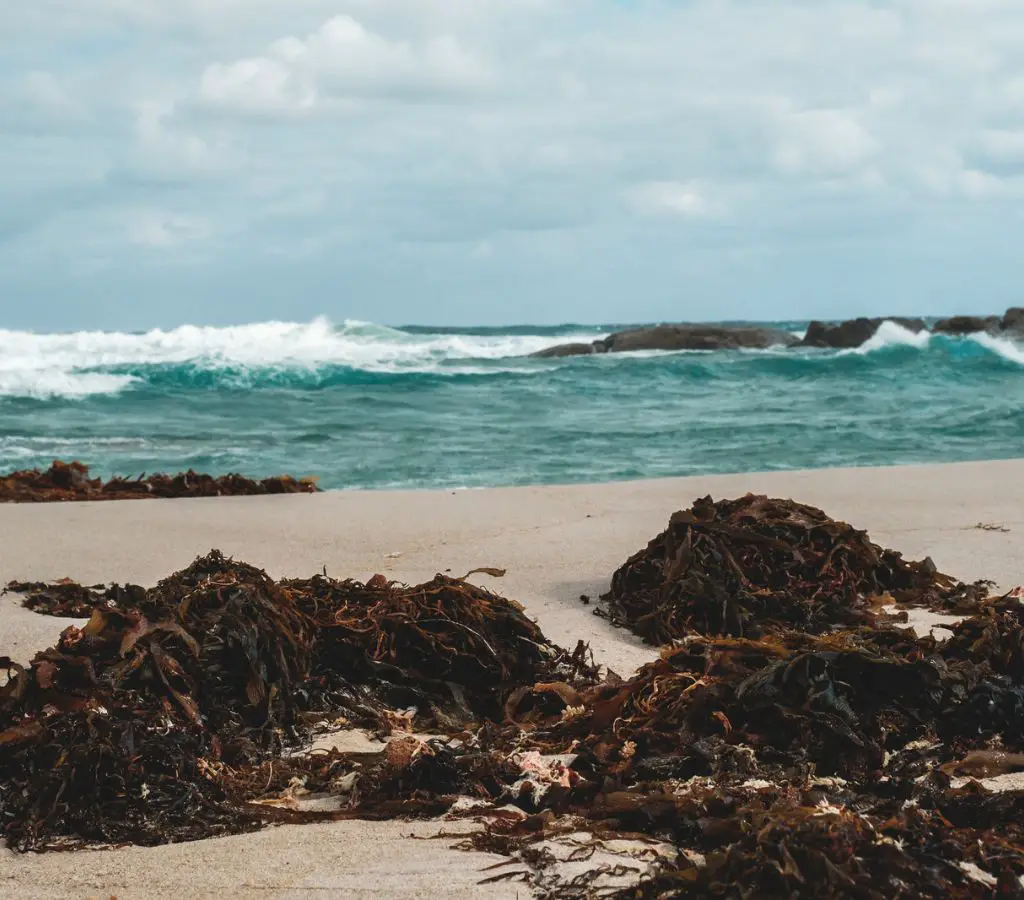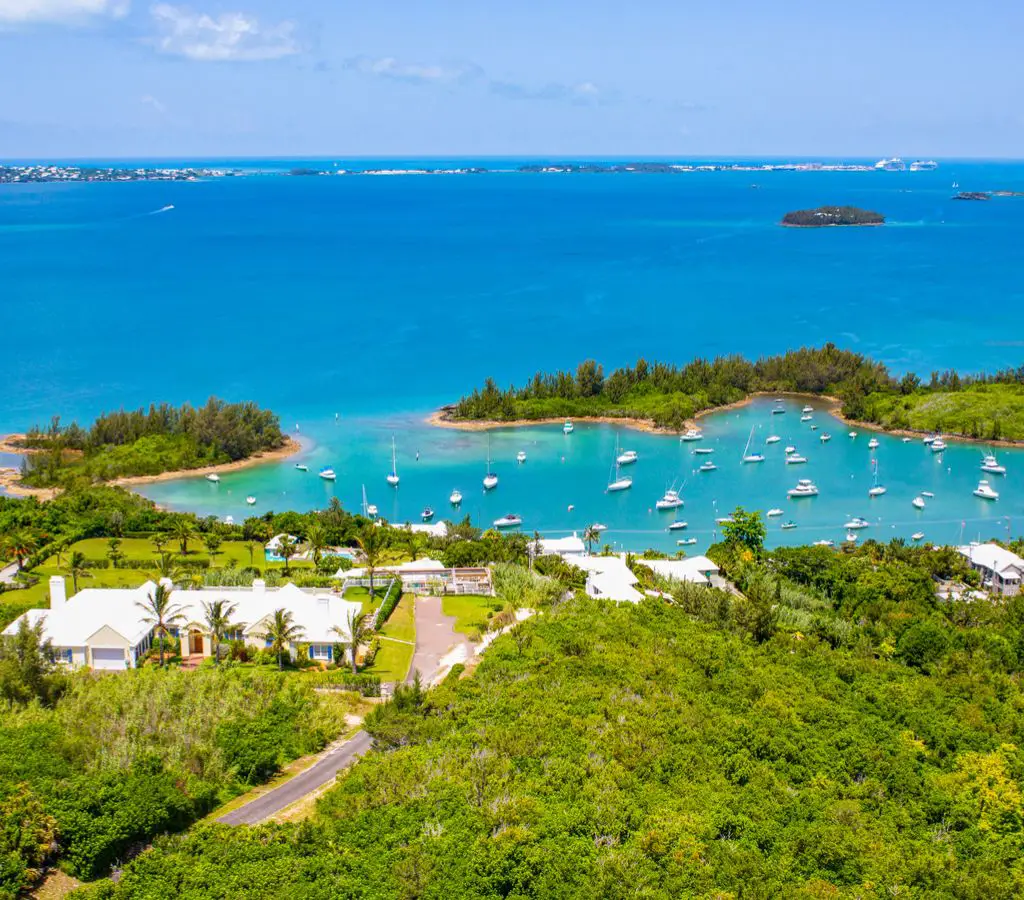People think of Bermuda as being a Caribbean group of islands, but it is situated 900 miles north, in the North Atlantic.
What is the significance of this?
Although surrounded by the Sargasso Sea, Bermuda falls outside the area worst affected by the gigantic sargassum mass that has polluted beaches in the Caribbean, Mexico, and Florida.
If you are planning a vacation to Bermuda, it’s important to know about the current seaweed conditions and forecast for the year 2023.
Let’s dive right in.
Is there a Bermuda Seaweed Problem in 2023? The Sargassum Seaweed Problem – A Brief Look
Table of Contents

Sargassum is a general term covering over 300 species of large brown algae, two of which are prevalent in the Atlantic, Sargassum natans (most commonly found in Bermuda) and Sargassum fluitans.
Initially, Sargassum was limited to an area known as the Sargasso Sea. It was thought to have been formed as a result of deforestation and single-crop agriculture affecting the water flowing into the Atlantic from the Amazon River.
From around 2009, changing currents and wind patterns caused Sargassum to spread across the Atlantic. Today thirteen million tons of Sargassum in a transcontinental belt covering 5500 miles threatens beaches in the Caribbean, Americas, and West Africa.
In the ocean, Sargassum is beneficial to marine life. Floating with the current and prevailing winds, it plays a vital role in ensuring the balance of the ecosystem, providing shelter and nutritious food for fishes, turtles, marine birds, crabs, and more.
However, when they get close to shore, the dense mats of Sargassum harm marine ecosystems by draining oxygen from the water and making fishing impossible, at an enormous cost to local economies.
Once ashore, Sargassum starts to rot within 48 hours, emitting foul-smelling ammonia and hydrogen sulfide gas, which not only attracts flies but repels visiting tourists and locals alike.
There are many innovative schemes for solving the seaweed problem. The harvested Sargassum is potentially valuable as a fertilizer, antioxidant, animal fodder, biofuel, or in treating various ailments.
Many local authorities and hotels employ personnel to clear the beaches by hand or using machinery, while often barriers are constructed using the Sargassum. Dunes are created to prevent too large a volume of seaweed from being deposited on the sand.
Current (Present) Seaweed Conditions In Bermuda
Bermuda is surrounded by the Sargasso Sea, which spirals slowly clockwise around its islands and coral reefs. As a result, some seaweed is constantly being deposited on the beaches, but the seaweed is considered beneficial, and the quantities have never presented a problem.
In fact, in 2014, the Hamilton Declaration was drawn up by the Bermudan government, with major international signatories, to preserve and protect the Sargasso Sea as a vital part of the plan to ensure marine life conservation in the region.
Present seaweed conditions in Bermuda are as usual. The last inundation was in 2019, and even then was handled efficiently. The Sargassum was either moved or buried in the dunes within a few days.
Bermuda Seaweed Forecast For 2023
By the end of March 2023, the sargassum belt had reached the previously mentioned record level of 13 million tons, and future “beaching events” around the Caribbean are inevitable.
To date, no unusual volumes have been reported in Bermuda, and its unique position as the only landmass surrounded by the Sargasso Sea, away from the trapped waters of the Gulf and protected by coral reefs, will save Bermuda from a Sargasso crisis.
Because of the unpredictable nature of the weather, there is never a guarantee that when you plan to visit Bermuda, the beaches will be pristine and free of seaweed.
However, the possibility of a massive influx of Sargassum is pretty low. You can confirm the conditions by contacting the hotel you’ll be staying at or your travel agent, who will give you the latest update.
Most Seaweed-Affected Beaches/Region In Bermuda In 2023
If, on the odd occasion, a storm drives seaweed onto the beaches, it’s most likely to be deposited on the beaches of the South Shore because they are most exposed to the winds and currents bringing Sargassum closer to shore.
However, it’s a rare occurrence, and there is no problem for visitors at present and no indication of any large sargassum deposits hitting Bermuda in the near future.
In 2022, the worst-affected beaches were West Whale Bay and Church Bay, but that’s not to say they will be affected in 2023. They are both protected by rocks and reefs and are perfect for snorkeling and were cleared and ready to be enjoyed again within days.
Best Seaweed-Free Beaches/Regions To Visit In Bermuda In 2023
At the risk of repeating myself, there is very little chance of finding more than a small amount of seaweed on any beach in Bermuda unless there’s been a storm.
The vast deposits found in the Caribbean resorts during summer result from currents trapping the Sargassum in the Gulf, while Bermuda is surrounded by the North Atlantic on all sides.
To really be on the safe side, you could give preference to the North Shore of Bermuda, with small, less populated beaches such as St. Catherines, Shelly, and Whalebone Bay.
The best beach in Bermuda is also the most popular – Horseshoe Bay Beach. With its pink sand and crystal-clear water, it’s rated among the Top Twenty Beaches worldwide.
Other recommendations for beaches that are ALMOST guaranteed to be seaweed-free include Warwick Long Bay, West Whale Bay, and Church Bay.
If you check pictures of Bermuda beaches, you’ll see that there is often some seaweed above the high-water mark.
As we mentioned, this is totally normal and part of the local ecological balance. It’s easily removed or covered and helps to stabilize the sandy dunes, so it should never put you off visiting Bermuda.
Conclusion
Yes, you will find seaweed on Bermuda beaches at various times during the year, but only on rare occasions does it present a problem. It forms part of a very valuable ecological system in the Sargasso Sea, protecting the lives of many aquatic creatures and plants.
It won’t affect your visit to Bermuda, and we hope we’ve given you enough facts to prove it. Enjoy your vacation!
Related Posts
✅ Aruba SEAWEED Problem [2023]: Everything You Need To Know!!
✅ Punta Cana SEAWEED Problem [2023]: Everything You Need To Know!
✅ Antigua Seaweed Problem 2023: Everything You Need to Know Before You Visit
✅ Puerto Rico Seaweed Problem [2023]: Everything You Need to Know!
✅ Belize Seaweed Problem [2023]: Everything You Need to Know!
✅ Jamaica Seaweed Problem [2023]: Everything You Need To Know!!
✅ Turks & Caicos Seaweed Problem 2023: Everything You Need to Know Before You Visit!
✅ Isla Holbox Seaweed Problem 2023: Everything You Need To Know Before You Visit!
References
https://environment.bm/sargassum-seaweed
https://optics.marine.usf.edu/projects/SaWS/pdf/Sargassum_outlook_2023_bulletin3_USF.pdf

